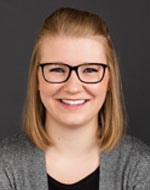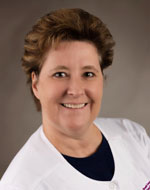The Price of Healing
By Stacy Kusler on

"The blessing of the program is that it allows the recipient to be relieved of the overwhelming burden and stresses of student debt, all while being able to enjoy providing care to the underserved populations in our rural communities," Dr. Markelle Gartner said, speaking of a loan repayment program through the state of North Dakota that has allowed her debt relief in return for healthcare service to her rural area.
Gartner, a North Dakota native who attended dental school at the University of Colorado, left dental school with nearly $400,000 in student loan debt. Gartner, who now practices as a dentist at Orn Family Dentistry in Jamestown, North Dakota, felt weighed down by her debt.
"Coming out of school and having a large debt really places a huge burden on the likelihood of being able to make any of those bigger purchases, such as a car, house, buying into a practice, or even sometimes having a family," she said. "Large student loan debt adds a huge stressor in an already unknown situation as a new professional enters a practice just out of dental school."
Sacrifices
As Gartner's story suggests, health professionals sacrifice a great deal, even before they begin working. Time and money arguably top the list. Time is expended in years of undergraduate and graduate education to achieve a desired degree or specialty, and all the while money is spent on housing, living expenses, and tuition while in school.
In fact, according to the Association of American Medical Colleges, the median debt for medical students in 2019 was $200,000. The average debt for medical students at the University of North Dakota School of Medicine & Health Sciences at graduation is nearly $170,000. In comparison, the American Dental Education Association reports that the average debt for a dental school graduate in 2019 was $292,159. Nursing and health sciences students from North Dakota colleges can likewise easily see six-figure debt burdens.
Need for Debt Relief
 It is a good thing the North
Dakota Primary Care Office (NDPCO) seeks to relieve
the educational debt burden for healthcare professionals
by encouraging recruitment and retention in underserved
areas through a variety of loan repayment incentives.
It is a good thing the North
Dakota Primary Care Office (NDPCO) seeks to relieve
the educational debt burden for healthcare professionals
by encouraging recruitment and retention in underserved
areas through a variety of loan repayment incentives.
Jessica Schaible, a licensed master social worker, is employed in the Dickinson, North Dakota, area. Schaible completed her bachelor's degree through Minot State University and then completed her Master of Social Work degree through Boise State University's online program. She entered the workforce with $80,000 in educational loan debt.
It is extremely stressful to enter practice with a large student loan debt. It makes you feel stuck in your position.
"It is extremely stressful to enter practice with a large student loan debt. It makes you feel stuck in your position," she said, adding that when you add in other daily costs, such as groceries, mortgage or rent, and childcare, it can feel impossible to get ahead. "It seems like you will be paying off your student loans forever."

Dr. Trina Taszarek-Schilling of Wishek, North Dakota, felt the same stress weighing on her as she re-entered practice after taking some time off to complete her Doctorate of Nursing Practice (DNP). After building up educational debt from her nursing undergraduate program, and two master's programs (Master of Business Administration and Master of Management with concentration in healthcare administration), and finally her DNP degree, she found her student loan debt had reached nearly $135,000.
"There's also other expenses not covered by student loans, including travel to and from clinical rotations," she said.
Finding Help
With the weight of debt hanging over their heads, Schaible, Taszarek-Schilling, and Gartner sought out resources to help. They all landed on the NDPCO website, informing them that help was available. And due to their practice locations in the state, and the program's intent to reward healthcare professionals for serving in rural or underserved areas of the state, all three were awarded loan repayment.
The loan repayment program has made it a little easier to be able to afford other costs in my life, like mortgage and children.
"The loan repayment program has made it a little easier to be able to afford other costs in my life, like mortgage and children. I don't think we would be considering a different home [without loan repayment assistance] due to the costs of my student loans," Schaible said.
Taszarek-Schilling now has a reachable goal of paying off her student loans in three years, a great improvement from the 10-year plan she was following prior to receiving the award. Receiving loan repayment assistance also allowed Gartner to breathe a sigh of relief.
Resources Available
The NDPCO offers multiple loan repayment programs to healthcare professionals committing to serving in a rural or underserved area of the state, including:
- North Dakota Healthcare Professionals Loan Repayment Program
- North Dakota Dental Loan Repayment Program
- North Dakota Veterinarian Loan Repayment Program
- Federal State Loan Repayment Program
Together, these programs offer debt relief to a variety of health professionals serving rural and underserved areas and populations in the state.
Kalee Werner, director of the NDPCO, reports that there are currently 113 healthcare professionals actively serving the state under these loan repayment programs. She said these programs are vital to assisting communities to fill healthcare workforce needs.
These programs are valuable recruitment and retention tools, especially for rural communities, to gain qualified healthcare providers.
"Many of our rural communities are struggling to find qualified providers to provide healthcare services in their communities," she said. "These programs are valuable recruitment and retention tools, especially for rural communities, to gain qualified healthcare providers."
For Werner and the NDPCO, a key part of these programs is not only recruitment, but also retention. Between 2013 and 2019, there were 35 healthcare professionals awarded with SLRP funds, which is a two-year program.
As of early 2020, 95% of those professionals remained in North Dakota. In comparison, the North Dakota Healthcare Professionals Loan Repayment Program has an average retention rate of 68% for physicians, physician assistants, and nurse practitioners who received loan repayment from 1993 to 2020.


 is the connection between rural healthcare facilities in North Dakota and qualified health professional job seekers. As the workforce specialist, she assists rural facilities to attract medical providers and other health professionals to their communities by sharing job opportunities. Through her position, Stacy is working to reduce the healthcare workforce shortages throughout the state.
is the connection between rural healthcare facilities in North Dakota and qualified health professional job seekers. As the workforce specialist, she assists rural facilities to attract medical providers and other health professionals to their communities by sharing job opportunities. Through her position, Stacy is working to reduce the healthcare workforce shortages throughout the state.



